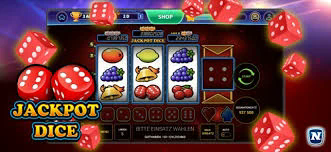# Tavla: The Ancient Game of Strategy
Tavla, known as backgammon in English, is one of the oldest board games still played today. With origins tracing back to ancient civilizations, it combines elements of luck and strategy, making it a compelling and engaging game. This article will deep dive into the history, rules, strategies, and cultural significance of Tavla, providing a comprehensive understanding of this intriguing game.
## Historical Origins

The origins of Tavla are shrouded in mystery, but various theories suggest it dates back to over 5,000 years ago. Archaeological findings in Mesopotamia reveal board game equipment resembling Tavla, indicating that civilizations like the Sumerians and the Assyrians enjoyed similar games. This historical context links Tavla to the early development of strategic games, highlighting how it reflects the intellectual pursuits of ancient societies.
The game made its way through various cultures, evolving with each iteration. The Romans played a counterpart called “Duodecim Scripta,” while the Persians had their own version known as “Nard.” By the time Tavla reached the Ottoman Empire, it underwent significant standardization, leading to the modern form we recognize today.
## The Game Components
Tavla is played on a board consisting of 24 narrow triangles, known as points. The board is divided into four quadrants containing six points each. Each player has 15 checkers (or stones), which are typically one color for one player and another for the opponent. The game also involves two dice, which determine the movement of the checkers. Additionally, players use a doubling cube—a tool that adds complexity to the game by allowing players to raise the stakes.
The board’s layout and the movement rules create a visually striking game that requires careful planning and execution. The interaction between the checkers and the points creates a dynamic system where strategy and adaptation are crucial.
## Basic Rules and Gameplay
The objective of Tavla is to move all of one’s checkers into one’s home board and then bear them off before one’s opponent does. The game begins with both players setting up their checkers in specific starting positions. The players then take turns rolling the dice, using the numbers rolled to move their checkers forward.
One of the game’s defining features is the concept of hitting an opponent’s checker. When a player lands on a point occupied by a single opponent’s checker, they can send that checker to the bar, requiring the opponent to re-enter it on their next turn. This adds a layer of tactical depth, as hitting can disrupt an opponent’s strategy significantly.
Players can also utilize the doubling cube strategically. When a player believes they are in a favorable position, they can propose to double the stakes. The opponent must then decide whether to accept the double and continue playing or concede the game. This mechanism enhances the game’s psychological aspect, where risk assessment and bluffing can play crucial roles.
## Strategic Considerations
Strategy in Tavla revolves around both long-term planning and short-term tactical maneuvers. Several key principles govern successful play:

1. **Control of the Board:** Players aim to occupy as many points as possible, especially those that can limit opponent movement. Maintaining control over crucial points is a hallmark of skilled players.
2. **Blot Management:** A “blot” refers to a single checker on a point, making it vulnerable to being hit. Successful players manage their blots carefully, minimizing their exposure while looking for opportunities to hit their opponent’s checkers.
3. **Timing:** The timing of bearing off checkers is vital. Rushing to bear off prematurely can lead to strategic disadvantages, while delaying too long might give the opponent a window to prevail.
4. **Reading the Opponent:** Being able to anticipate an opponent’s moves is crucial in Tavla. Experienced players will often adjust their strategies based on their opponent’s actions and tendencies.
By employing these strategies, players can enhance their gameplay, creating an engaging and competitive atmosphere.
## The Cultural Impact
Tavla holds significant cultural importance in various societies, particularly in Turkey, where it is more than just a game; it is a social event. Cafés and homes alike host Tavla boards, promoting community interaction and friendly competition. The game embodies the spirit of hospitality and leisure in Turkish culture, often played over cups of tea or coffee.
The game also finds representation in literature and art, serving as a metaphor for life’s challenges and unpredictability. The interplay of luck and strategy encapsulates the broader themes of fate and agency, making Tavla a rich subject for academic and cultural discourse.
## The Modern Game and Online Play
With the advent of technology, Tavla has transitioned into the digital realm. Online platforms allow players to engage in matches against opponents worldwide, elevating the game’s accessibility and enthusiasm. This shift has revived interest in Tavla, especially among younger audiences, while preserving the traditional gameplay experience.
Online versions often feature variations of the rules and formats, introducing players to diverse styles of play. These adaptations can enhance understanding of the game’s nuances, making it easier to learn for newcomers and providing advanced gamers with challenging formats.
## Conclusion: The Timeless Appeal of Tavla
Tavla’s rich historical tapestry, strategic depth, and cultural significance contribute to its enduring popularity. As an intersection of luck and skill, it appeals to a broad audience, offering both casual and competitive experiences. The game not only serves as a source of entertainment but also a means of forging connections across generations and cultures.
Whether played in a café in Istanbul or an online tournament, Tavla remains a testament to humanity’s love for strategy, community, and the timeless pursuit of understanding chance and choice. As it continues to evolve, Tavla stands as a bridge between the past and future, inviting players to engage with its complexity and charm.
